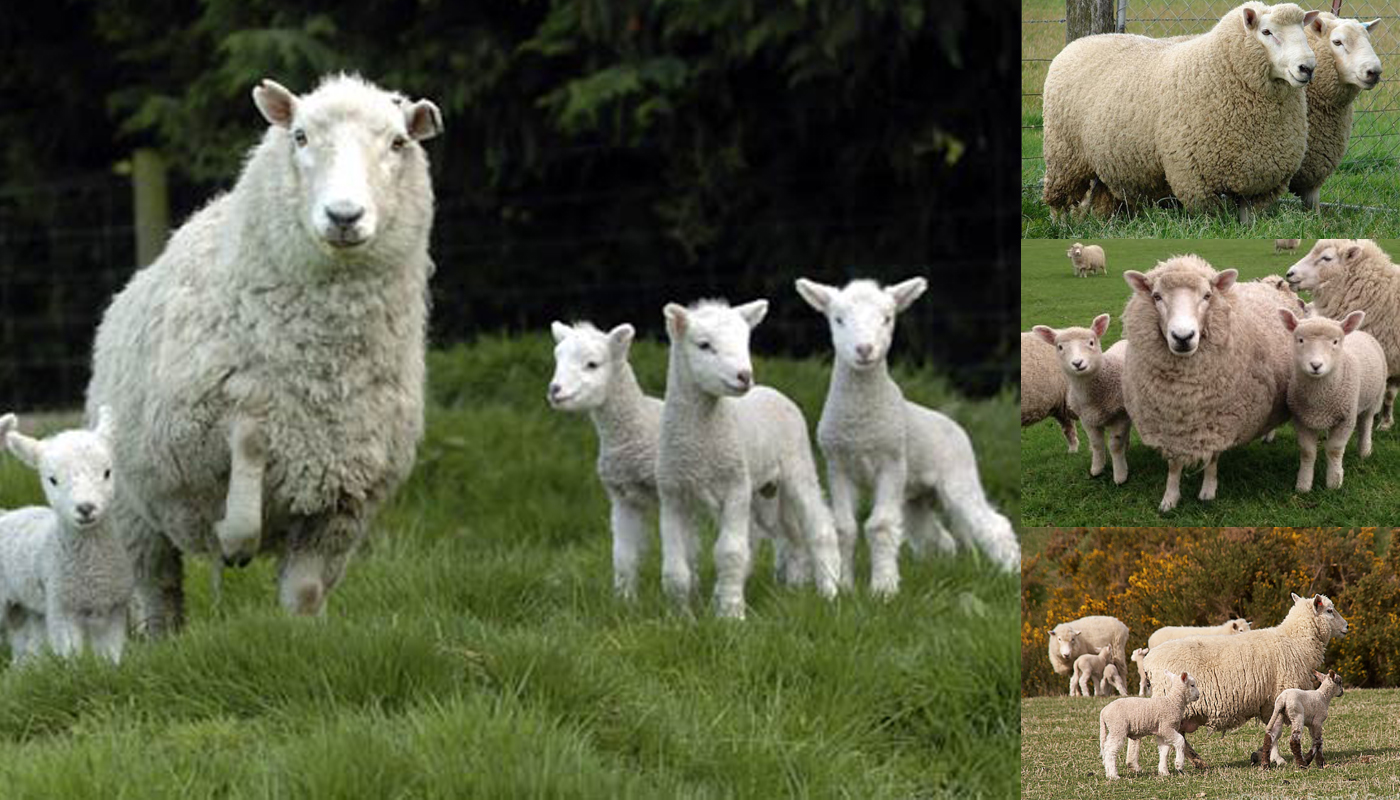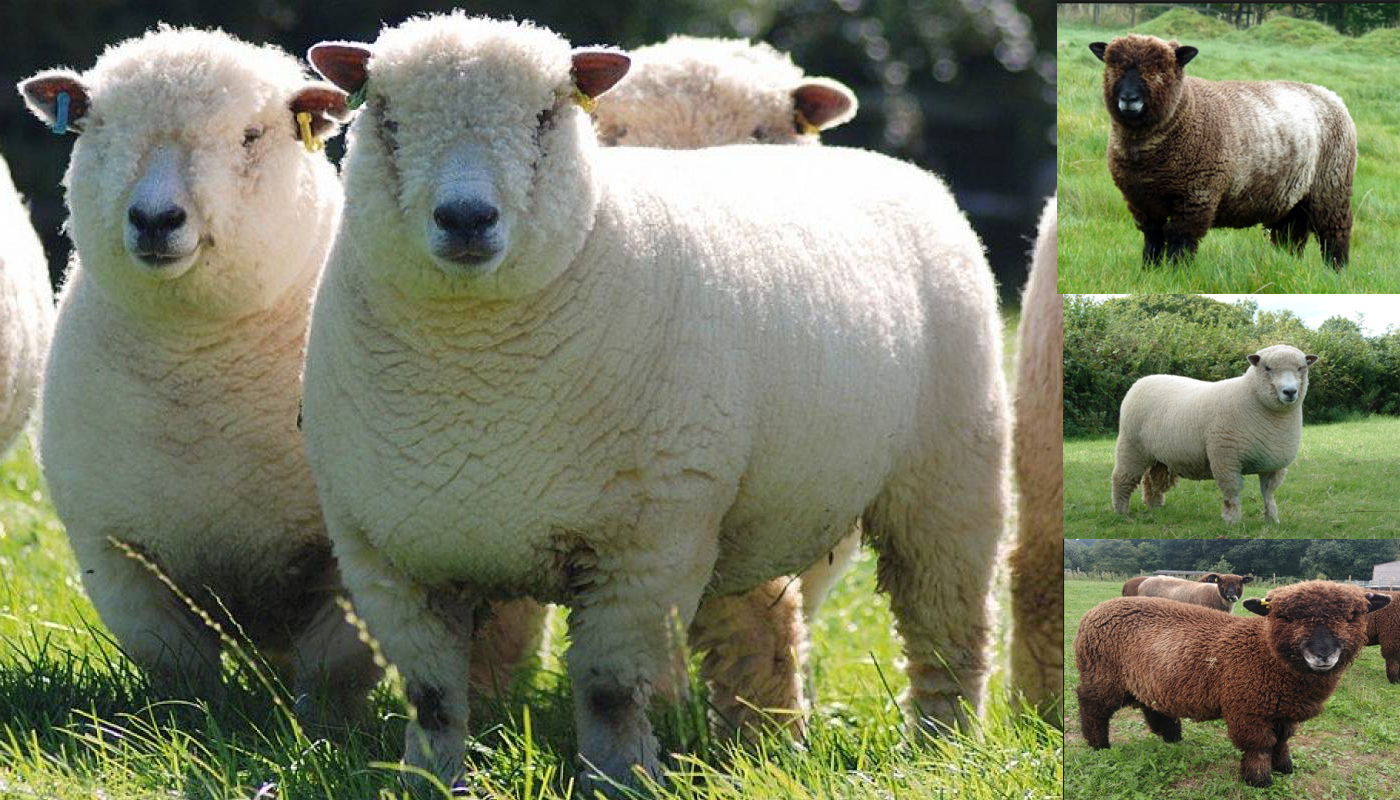
The Dorper Sheep is a hardy resilient South African breed of sheep that can withstand various harsh climates, environments and intensive operations.
The ewes produce vigorous, healthy, robust lambs that have a high survivability. The ewes are also heavy milkers with excellent maternal instincts.
They are and alert, docile, easy to handle and keep breed of sheep that are a value to any sheep farm.
DORPER SHEEP QUICK PROFILE OVERVIEW |
|
|---|---|
| The Dorper Sheep breed is a breed of sheep that can withstand arid temperatures and do not mind the snow either! | |
| Country of Origin: | South Africa |
| Other Names: | None |
| Breed Size: | Medium |
| Main Purpose: | Meat |
| You may Also Like: | 11 Best Sheep Breeds for Meat Production |
| Can be used for | Breed, Meat, **LSC (Landscape Management) |
| Temperament: | Docile and easy care |
| Ideal Climate: | Most climates |
| Conservation Status: |
Not Listed by the *ALC Status/ Rarity: Common |
| Health Issues? | No known health issues |
| Good Starter Sheep? | Novice to Intermediate level of sheep farmer/keeper |
| Sheep Associations: | American Dorper Sheep Breeders’ Society |
| Sheep Clubs: | Refer to the American Dorper Sheep Breeders Society members/breeders directory. |
| Note: *ALC stands for American Livestock Conservancy ** LSC stands for Landscape Management – the animal is used for controlling various vegetation growth |
|
PHYSICAL CHARACTERISTICS |
||||||||||||||||||||||||||||||||
|---|---|---|---|---|---|---|---|---|---|---|---|---|---|---|---|---|---|---|---|---|---|---|---|---|---|---|---|---|---|---|---|---|
| The Dorper sheep are a medium sized breed with minimal wool on their well-rounded bodies. They have a medium sized face and straight profile. Their face and legs are clean of wool and smooth. | ||||||||||||||||||||||||||||||||
| Color(s): | White or white with black heads. | |||||||||||||||||||||||||||||||
|
||||||||||||||||||||||||||||||||
EWE BREEDING & MILKING INFORMATION |
|
|---|---|
| They have a prolonged breeding cycle, are heavy milkers with excellent maternal instincts. They produce vigorous lambs that with high survival rate. | |
| Breeding Period/cycle: | Usually lasts 16 to 59 hours |
| Estrous cycle: | Ave. 17 days/15 to 20 days |
| Gestation Period: | Usually, around 149 to 155 days but most gestation is 152 days |
| No. Lambs/Litter: | 1 and on the rare occasion 2 (twins) |
| Lactation Period: | Usually, around 150 to 240 day but most are milked for 180 days |
| Milking From: | 4 to 6 weeks after lambing |
| Milk Quality: | Good, Quantity: Enough to wean lambs, Per: Lactation period |
| Milk Ideal for: | Lambs |
| You may Also Like: | 10 Best Sheep Breeds for Milk |
SHEEP MEAT PRODUCTION INFORMATION |
||||||||||
|---|---|---|---|---|---|---|---|---|---|---|
| They are used for both lamb and mutton. Their lambs have a high growth rate and reach weights of up to 36 kgs in 3 to 4 months. They have a premium quality of meat with a good meat to bone ratio and low percentage of waste. | ||||||||||
| Meat Production: | Yes, Quality: Excellent | |||||||||
|
||||||||||
| You may Also Like: | 11 Best Sheep Breeds for Meat Production | |||||||||
SHEEP SKIN PRODUCTION INFORMATION |
|||||||
|---|---|---|---|---|---|---|---|
| Dorper sheep are prized for their skins and are considered to have the best skins in the world for the production of fine leather products. Their skin has a smooth grain to it with no wrinkles. The grain consists of a strong network of collagen fibers which make the skin exceptionally strong. The fibers of the Dorper skin have a tighter, denser but more delicate structure than that of goat skin or other wool sheep. The Dorper skin fibers are flat for the weave angle which strengthens the leather even further. | |||||||
| Skin Production? | Yes, Quality: Fine quality considered the best in the world | ||||||
| Skin is used to Produce: | Kid skin leather products such as fine/high quality gloves and clothes | ||||||
|
|||||||
| You may Also Like: | 18 Best Wool Producing Sheep Breeds | ||||||
GOOD TO KNOW ABOUT THE DORPER SHEEP |
|
|---|---|
| A few more interesting facts to know about the breed | |
| Child-Friendly? | They are docile and calm, but they are still livestock, so no children should be left unsupervised around them |
| Landscape Management? | Dorper sheep breed can eat most things and are excellent for improving various land conditions. They have non-selective grazing habits which means that they make the most of any type of grazing or roughage. They can even eat bush that most other sheep cannot. |
| Where to buy them? | Please refer to the members/breeders directory of the American Dorper Sheep Breeders Society |
| General Information: | Dorper sheep utilize bushes and shrubs to a greater extent for their feed than other sheep breeds such as the Merino-types do. Dorper sheep do not walk as much to select their food as other sheep do to find a suitable spot to graze. Thus, the Dorper sheep breed have less trampling, shorter grazing time and fewer separate grazing periods. |
HISTORY
There was an increased interest into creating a new cross of indigenous sheep such as the Persian and Merino with British mutton breed rams. This interest developed in South Africa just after the First World War. Due to the result of surplus mutton, a slump in the wool prices and the depression in the early 1930’s more attention was drawn to exporting lamb and mutton.
The English did not rate fat-tailed ship as a good grade and so they were not desirable sheep breeds.
There was a definite need for a breed that produced good mutton with fast growing lambs with good quality carcasses that could be fed on veld conditions. The prime need was for a breed that was relatively easy to care for, had a good meat carcass and could survive the low rainfall areas such as in the Northern Province.
The Department of Agriculture of South Africa decided to develop the Dorper Sheep breed in the 1930’s. The breed was the result of the crossing of the Blackhead Persian Breed ewes with a Dorset Horn Ram. But due to high prices, mortality and the phase only started in 1941.
VIDEO
USEFUL LINKS
- United States Lamb Resource Center
- American Sheep Industry Association
- American Sheep Industry Association List of Breed Associations & Standards
- American Milk Sheep Association
- Dairy Sheep Association of North America
- American Wool Council
- Fur Commission USA
- North American Meat Institute
- American Lamb Board
- National Lamb Feeders Association
- American Livestock Conservancy
- Animal Shelter (ASPCA)
- American Veterinary Medical Association
- American Animal Welfare Society
- American Animal Control
- American Animal Husbandry Society
- United States Department of Agriculture
 10 Best Sheep Breeds for Milk
10 Best Sheep Breeds for Milk Shropshire Sheep Breed – Everything You Need to Know
Shropshire Sheep Breed – Everything You Need to Know Awassi Sheep Breed – Everything You Need to Know
Awassi Sheep Breed – Everything You Need to Know Dorset Horn Sheep Breed – Everything You Need to Know
Dorset Horn Sheep Breed – Everything You Need to Know Targhee Sheep Breed – Everything You Need to Know
Targhee Sheep Breed – Everything You Need to Know Perendale Sheep Breed – Everything You Need to Know
Perendale Sheep Breed – Everything You Need to Know Lincoln Sheep Breed – Everything You Need to Know
Lincoln Sheep Breed – Everything You Need to Know Scottish Blackface Sheep Breed – Everything You Need to Know
Scottish Blackface Sheep Breed – Everything You Need to Know Ryeland Sheep Breed – Everything You Need to Know
Ryeland Sheep Breed – Everything You Need to Know Clun Forest Sheep Breed – Everything You Need to Know
Clun Forest Sheep Breed – Everything You Need to Know Romanov Sheep Breed – Everything You Need to Know
Romanov Sheep Breed – Everything You Need to Know Charollais Sheep Breed – Everything You Need to Know
Charollais Sheep Breed – Everything You Need to Know